
Thomas W
-
Posts
788 -
Joined
-
Last visited
-
Days Won
3
Content Type
Profiles
Forums
Blogs
Gallery
Events
Store
Posts posted by Thomas W
-
-
Could one reason be the badge wasn't worn because they were hated even by comrades, much as MGSs gunners? When these troops turned up regulars knew they were in for a hard time. It seems to me there was much more wearing of specialist badges postwar up to 1925/6 than during actual W1 battles.
Interesting remark on helmets I'd had the same response from a German W2 vet recently. They couldn't wait to dump the steel helmet on the Eastern front he called it heavy uncomfortable froze your head in winter and fried it during the summer, they fought in wool caps.
Eric
There's a lot of anecdotal evidence that the Allies summarily killed flamethrower operators, and I have one account of German infantrymen taken prisoner along with flamethrower pioneers.
This British officer who wrote the account said that the German infantrymen asked the British to kill the flamethrower pioneers, because the latter always broke up live-and-let live arrangements and then left, causing the infantrymen to be shelled in retaliation.In this case, after the British refused to kill the flamethrower operators, the German infantrymen tried to do it, so the two groups were separated and brought back to the British trenches one at a time.
0 -
Thomas,
a seldom view indeed! The picture is from the Revolution time, when soldiers started to take liberties with uniform regulations.
If they were only given one example, maybe they were given the possibility to buy another one?
Regards
It's possible. In my entire collection, I have no other image of the Totenkopf on a greatcoat sleeve. The badge was so prized that men rarely wore it into combat. I have a handful of genuine combat photos of flamethrower pioneers, and only one shows some men wearing the badge.
This photo was taken on December 28, 1916, as a platoon of the 2nd Company was about to assault the Dead Man in Verdun. The majority of the men in the photo wear uniforms without the sleeve badge.
The red arrow shows Georg Lembke, Bob Lembke's father. This was his last battle as a flamethrower operator. He was wounded so severely that he was declared unfit for flamethrower duty and became a hand-grenade thrower. As Bob said, his father hated the steel helmet and wore his soft cap into combat instead.0 -
Show us the evidence he was not?
What is more likely, he was issued 2 Badges, or these things are so comman that it is more likely there just happened to be these 3 items together in a drawer somewhere.
It is sometimes easier to develop an opinion or theory based on what we find, instead of dismissing what we find because it does not fit an opinion.
Is there any serious thoughts as to who actually wore the badge? When did a guy recieve one?
What would constitute evidence that a person was not given something? A film of every second of their entire life?
"What's more likely"? Hey, now you're arguing what I used to argue. You always used to shoot it down. I guess it's different when you do it.
"It is sometimes easier to develop an opinion or theory based on what we find, instead of dismissing what we find because it does not fit an opinion."
That's what I used to argue too! Son of a gun!
Looks like you now agree with everything I once wrote, back when I tried to talk to you about it.
Better late than never.
0 -
You are assuming Meyer was not a flamethrower Pionier based on what?
Again, you're not listening.
I never said that Meyer was not a flamethrower pioneer. I was TOLD that he was a flamethrower pioneer, but all we know about him is that he made it to the replacement battalion.
We have no evidence that he was a member of the Garde-Reserve-Pionier-Regiment.
So the people who told me that he was a flamethrower pioneer ASSUMED it. They didn't base it on dog tags or documents.
You're really, REALLY big on everything being fully documented or else it's just a "working theory."
There's no documentation that Meyer was a flamethrower pioneer. Ergo, it's just a working theory.
I posted the photo of the guy with the badge on his greatcoat sleeve so that people with an interest in the topic could enjoy it. As so often happens, it became an occasion for a fight instigated by you.
How do you like your own rules of engagement used on you? Pretty unpleasant, isn't it?
This is why I haven't posted here in ages. And why I won't post again. Who needs this? I can't even post one photo without being grilled, and then it turns out that the chef bases his own conclusions on ASSUMPTIONS. All that screeching about how what I say isn't well-enough documented, and then look who jumps to conclusions based on ASSUMPTIONS.
Physician, heal thyself. Or grill thyself. On an open flame.
Look: Officers with enlisted men's badges on cruddy, rough cloth. The experts would call these badge fake, yet here they are in a period photo. Debate among yourselves. I'm going back to collecting.0 -
What are the chances of 2 badges and a tag being found in the same house and NOT being connected? And how on earth do you know he only made it to the replacement battalion?
Maybe you should read up a bit on dogtags... as I said before, many groups have the ersatz unit tag with 1 or 2 added units...
You're not listening, so I'll repeat.
I was told that the two sleeve badges were from one flamethrower pioneer named Johann Meyer.In reality, two badges and a dog tag from a man who made it to the replacement battalion were found in one house.
That's very different from "These two sleeve badges belonged to a flamethrower pioneer named Johann Meyer."
So we'll call the notion that both badges came from a flamethrower pioneer named Johann Meyer a "working theory" and not a fact, okay?
0 -
Which in no way shape or form does not mean he was not popsted to the regiment after instruction... on top of that, many german soldiers kept their original tag and further postings were added.
I dont think anyone who followed this group from the beginning doubts they belong together.
Of course. That increases the value of the grouping. But I was told that the two badges belonged to a flamethrower pioneer named Johann Meyer.
Instead it turns out that two badges and a disk from a man who made it as far as the replacement battalion were said to have have been found in the same house.
That's quite a different story from the one I was told.
0 -
Tom.
That's the only disc that came with the group, so far as I'm aware,
2 x TKs and 1 x disc.
Thanks, Robin. I was under the impression that the badges were from a confirmed member of the flamethrower regiment.
So there were two authentic badges, but there's no evidence that they belonged to the same man or that they belonged to Johann Meyer, since all we know about him is that he made it as far as the replacement battalion, where they didn't wear badges.
0 -
Whether he was issued with two badges ....................... or issued with one and just picked the other one up ........................ who knows.
Exactly.
That's the replacement battalion. There wasn't a disk from the Garde-Reserve-Pionier-Regiment?
Soldiers are wearing camouflage cutout helmets what is the image date?
Eric
No date, but the Truppführer appears to be wearing the sleeve badge of Minenwerfer Detachment Heuschkel.
0 -
I ended up with the Erkennungsmarke for the pioneer with two sleeve badges. His name was Johann Meyer, 3.Komp.
Chip
How do we know that both badges were issued to him? Is there a document saying, "These two badges once belonged to Johann Meyer"?
0 -
Chip and Robins came from the same man, it is not up to me to reveal the name.
The Germans were not stingy with awards, with things like arm shields in WW2 Officers recieved 3 (for insatnce)
It is indeed possible that initially each soldier got just one, and clever ones managed to organise more... but I think it could probably be classified as a working theory as opposed to a fact?
Best
Chris
However you want to describe it is fine with me.
0 -
Hi,
how do we know each man only got one? The group we know (now with Robin and Chip) had two examples in it?
Best
Chris
I don't know what you mean. Are you saying that Robin and Chip's badges both came from the same man? What was his name?
Bob Lembke said his father was issued only one badge, which was cut off his sleeve by a French soldier. He had the badge replaced, and then his first wife threw it out after the war.
Somewhere in my postcards I have a flamethrower pioneer talking about how he's got his new badge, and he has to take care of it because he received only one.
Also, Sturmtruppen and Flammenwerfer by Ludwig Charles Theune says that each flamethrower pioneer has two uniforms, one with the flamethrower badge and one without. I have dozens of photos that show flamethrower pioneers wearing either a Garde Pionier uniform with no badge or a pioneer uniform with no badge and no Litzen.
I also have a photo of a Feldwebel-Leutnant wearibng a pioneer uniform with no Litzen but a badge.The badge was an award, no different than a medal. Only one was issued. It could be replaced, though.
0 -
Two bizarre anomalies in one photo. Note the medic on the right.
1. He's got his Totenkopf on his OVERCOAT sleeve. Each man was issued only one badge. Maybe he was so proud of the death's head that he didn't mind tearing it off and resewing it on, depending on the season. I've never seen one on an overcoat before.
2. He's a medic. Normally medics were attached from the Medical Companies. A medic wouldn't have been trained on flamethrowers. It's possible that he's wearing the red cross brassard because he's simply been DEEMED a medic by the unit, but I've never seen medical personnel with a flamethrower badge.0 -
Soldier on the left seems to have something too but the other has a definite pattern.
btw Thomas I've seen 1918 photographs with the front visor cut off m16 stahlhelme (not the visorless m18) you talk about in your blog, for example have you ever tried operating a 08/15 from a prone position wearing a standard helmet?
Troops wearing their wool caps underneath and what angle he is wearing when stood up come into play,you only really tell in profile of course, the wearing backwards in trenches by ie: mg personal I first noticed 1967 when I was studying Battle of the Somme for a school project.
Eric
I have yet to find a good, clear side view of the visorless hlmet, probably because most men faced the camera when their photos were taken.
It's amazing how left there is to rediscover about World War I.
0 -
The interesting thing is that the man on the right is obviously Asian.
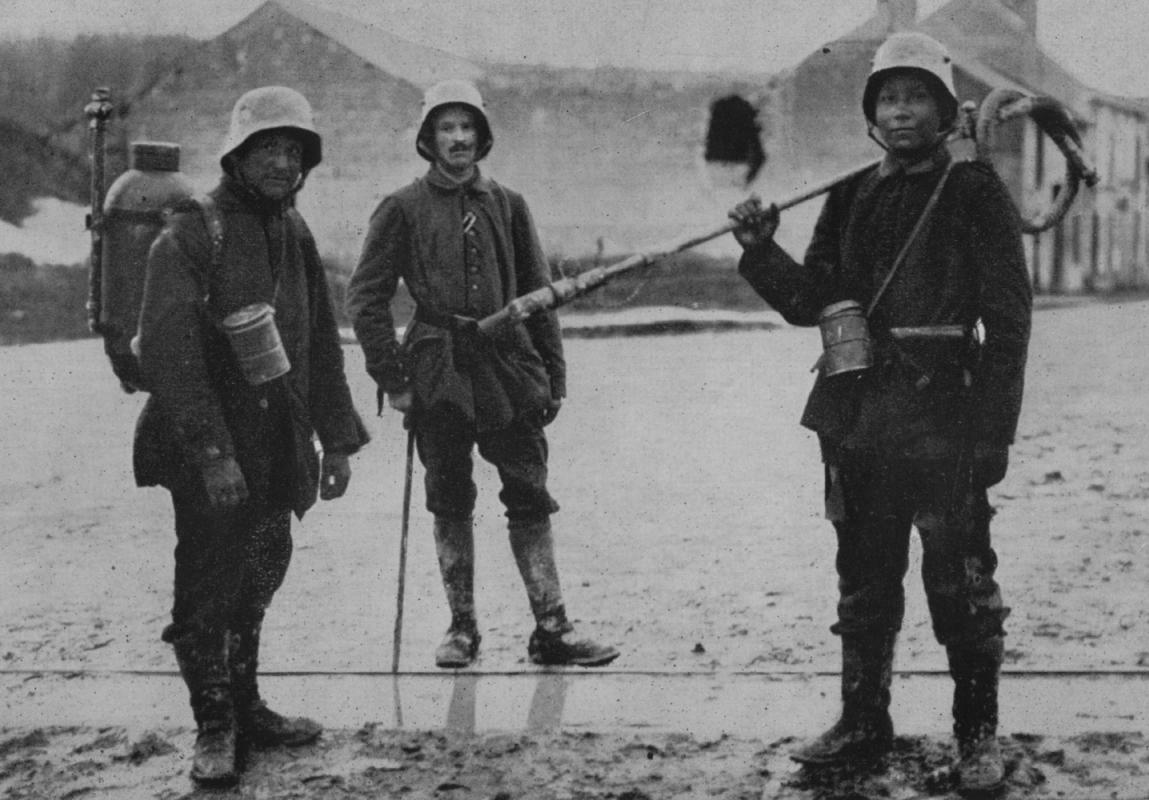 0
0 -
My pleasure, Robin. You got rooked. I hate getting rooked, so I was able to un-rook the rooking. To a certain extent.
Any WWI flamethrower postcard is payment enough. Doesn't have to be one that millions fight over.0 -
Robin, looks like I have a genuine one.
If it is, you can have it. I found it in a box of crap my great-aunt left behind.
 0
0 -
Hi!
Does someone know, where I can get the book of Reddemann? A pdf would be ok too.
Thanks a lot!
I can make you a PDF of my photocopy, if you want.
0 -
Kornel,
Reddemann in his book: "Geschichte der deutschen Flammenwerfertruppe" (from which I quoted in my earlier post) is contradicting Heinrici.
During most of 1915, there where no 12 companies of Flammenwerfer. Only when the III. Btl expanded to regimental size a 12th coy (and others) was (were) added.
A bataillon of Pioniere had four companies. The I. Bataillon would have coys 1 - 4. The II. Bataillon 5 - 8 and the III. Bataillon 9 - 12.
That was also correct for the III.Garde-Pionier-Bataillon before it became the Flammenwerfertruppe.
Once Reddemann established the III. Garde-Pionier Bataillon as the Flammenwerfertruppe, in the spring of 1915 the the company numbers changed from 9, 10, 11, 12 to 1, 2, 3, 4 (since there were no other Flammenwerfer companies). Therefore, in 1915 the former 12.Kompanie of the III. Garde-Pionier-Bataillon is indentical with the 4.Kompanie III. Garde-Pionier-Bataillon (Flammenwerfertruppe)
Heinrici quoted the company numbers of the III. Garde-Pionier-Bataillon like any other III. Bataillon.
Reddemann refered to the companies by either the names of their commanders or by the number within the battalion (1st, 2nd, 3rd, 4th), but the official number of each company remained relative to the original Garde-Pionier-Bataillon.
There was no third guard pioneer battalion until the flamethrower battalion was created. The III. Garde-Pionier-Bataillon was still officially the Garde-Pionier-Bataillon. It was the third battalion of the Garde-Pionier-Battalion, which sounds wierd, but this is confirmed by Heinrici, Hermann Cron, and the death book of the flamethrower troops.
It's also confirmed by postcards.
The official stamp and the writer both indicate the 12th Company in 1915. Reddemann called it the 4th Company, but it was officically the 12th Company.
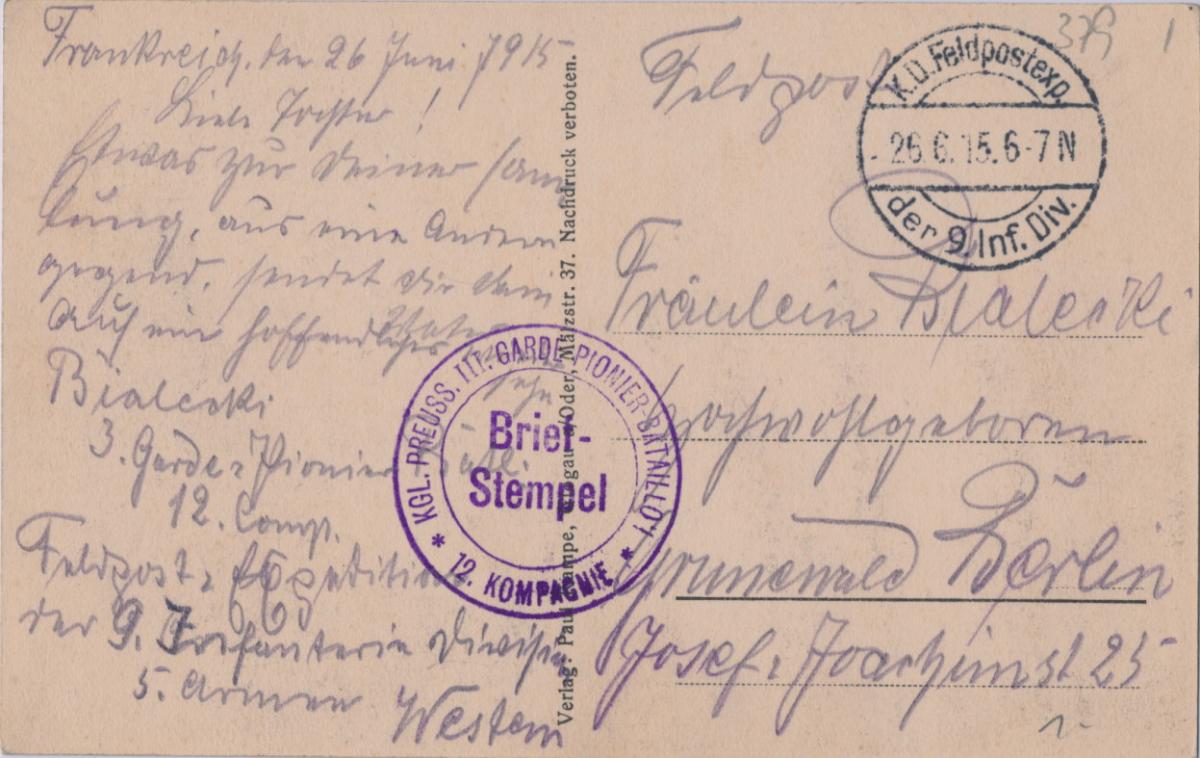 0
0 -
A fly in the ointment...
I thought the death's head sleeve badge at the top of the cuff meant men from the Recruit Depot of the Garde-Reserve-Pionier-Regiment, but every badge in this photo of the flamethrower platoon of Jäger- (Sturm-) Bataillion Nr. 3 shows the badge at the top of the cuff.
It's not possible that every man was recently transferred in from the recruit depot, so now I think the badge at the top of the cuff represents the flamethrower platoon of Jäger- (Sturm-) Bataillion Nr. 3. Aside from Sturmbataillon Nr. 5 (Rohr), this was the only assualt battalion that had an integral flamethrower platoon from its inception. In the case of all other army assault battalions, the flamethrower platoons were attached from the flamethrower regiment.
The officer has a metal death's head badge with no cloth backing patch. Never seen that before.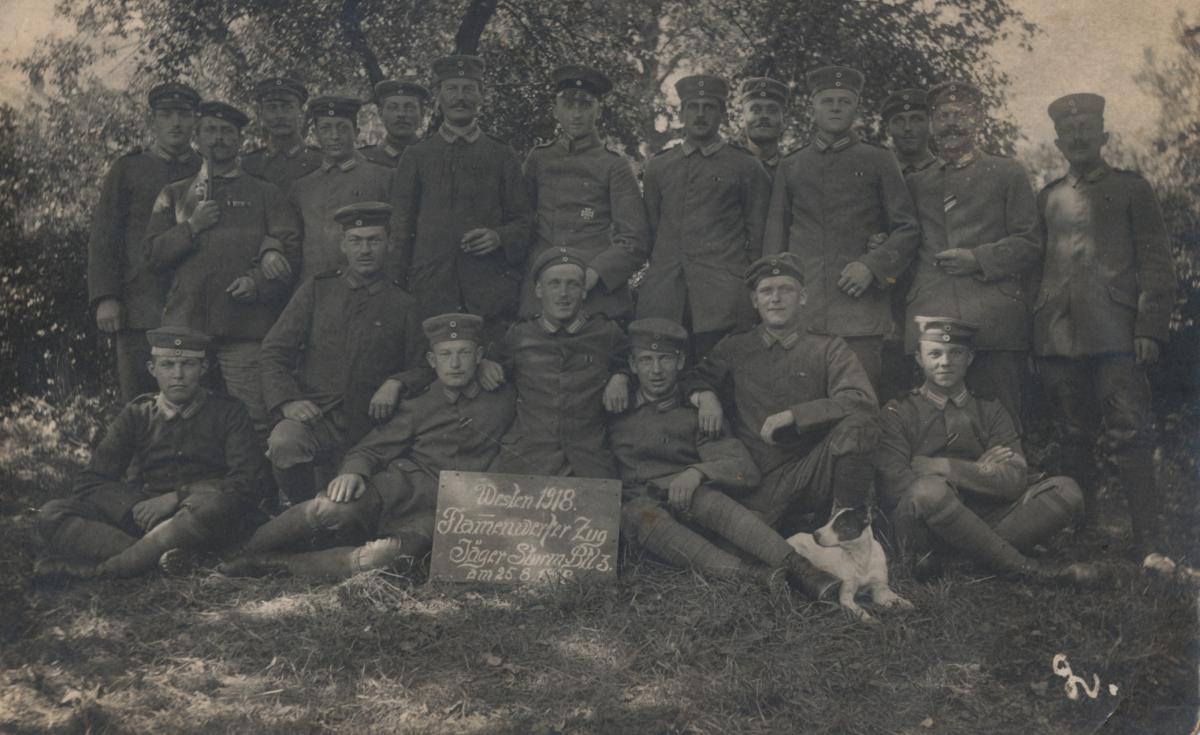
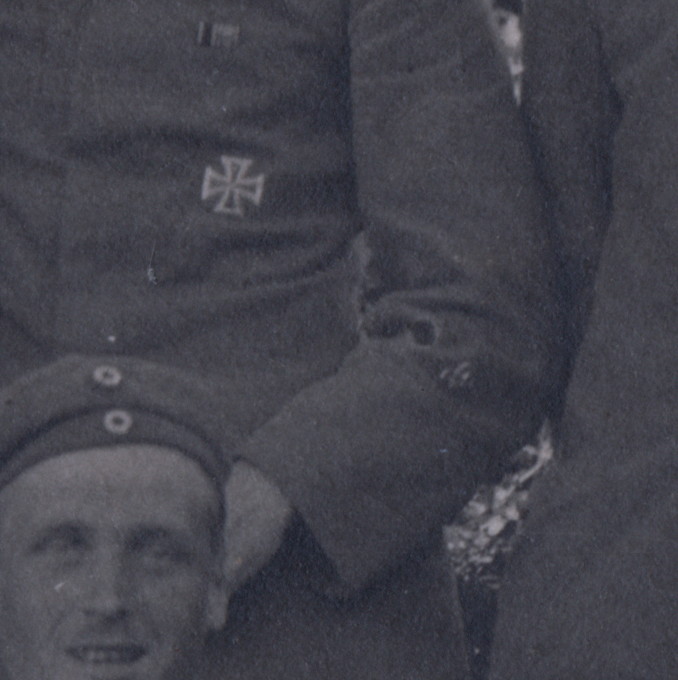 0
0 -
Well spotted, Thomas.
The particular position of the TKs here didn't enter my head.
If these 1916 FW recruits in the above photos wore the relatively newly-introduced TK badge in that particular position, it might be safe to assume that it would have been sewn to their new Gd. Pnr. tunics before they were issued with them. In other words, joining their new regiment, they would have been given new tunics rather than having to personally de-badge their existing uniforms and then re-badge them with all the Gd. Pnr. collars, straps and other badges.
At the very least, their existing tunics might have been re-badged on their behalf by the regimental tailors.
The point I'm trying to make (very clumsily) is that this might have been the 'official position' placing of the new TK badge on the arm, at least as far as the uniform manufacturers or regimental tailors were concerned.
Does the photo below summarise your current understanding of the placing of these badges ??
My references--and several photos--show that all Guard Pioneers were issued two uniforms: The one with the Litzen, and a "plain" one with no Litzen.
All my photos of men in the replacment battalion show them with no sleeve badge. That would mean that the death's head was issued only when they entered the regimental recruit depot. My guess is they were handed the badge individually and told to sew it on themselves at the top of the cuff.
As for the photo, I can't say. The half-on-the-cuff position is rare, but I have so many of them that it has to signify something. It could be that half-on-the-cuff is machine gunners.
On the other hand, I have a Soldbuch for a flamethrower pioneer trained only in the grenade launcher and not the flamethrower. I would image that it would be harder to learn how to use a grenade launcher than a machine gun. Also, every half-on-the-cuff photo I have shows only two men in the whole group. A grenade-launcher was operated by two men, and only one per platoon was issued (three per company).
So the death's head badge is associated only with the flamethrower regiment and the Rohr platoon. We now know for certain that top-o'-the-cuff-to-ya means regimental recruit depot, and it's an official position.
The only unknown left is half-on-the cuff.
And the black death's head.
Incidentally, I have three photos of a guy who started out in Sturmbatallion Nr. 14, with his badge in the recruit-depot position. Then he was transferred to Sturmbataillon No. 5 (Rohr) and changed the badge to below the elbow, then he was sent back to Sturmbataillon 14 and put it in the center of the cuff.
The flamethrower pioneer Militärpass I have shows the guy going from the flamethrower battalion to the flamethrower regiment to factory duty to a pioneer recruit depot to a pioneer battalion to the aviation troops to a giant bomber detachment.
Seems like an insane use of his skills.
0 -
FW assault troops ........................
The mystery of the badge at the top of the sleeve cuff is solved: The men of the Recruit Depot wore it there. I thought it was machine gunners, but I have a photo that shows about thirty men with the badge at the top of the cuff. I didn't think this would be thirty machine gunners, but now I realize that new recruits wore the badge there.
The older guys in your photo are firefighters. They were recruited well into their fifties because they were incredibly fit, unafraid of fire, and familiar with spraying equipment.
0 -
Thomas,
you write:
Badge in the middle of the sleeve cuff, flamethrower operators. Badge below the left elbow, flamethrower operators of Sturmbataillon Nr. 5 (Rohr). Badge at the top of the sleeve cuff, machine gunner. And badge overlapping the cuff and sewn halfway on the sleeve, grenade-launcher crew.
If I take from your interesting theory of the four skull positions the one exemple of the Sturmbataillon Rohr, how do you then explain the period picture shown on #482750?
Regards
Gilles
#482750The Rohr badge was unofficially adopted in February of 1918. It was worn below the left elbow.
If a new flamethrower pioneer entered the battalion after February of 1918, his membership in the battalion would take precedence over his status as a flamethrower pioneer, so he would wear the Roher badge in its proper postion. That would require him to attach the flamethrower badge below the Rohr badge.
Or he could have already been a member of the battalion when the Rphr badge was adopted. It would've been an easy thing for him to change the position of his flamethrower badge.
I have three photos of the same flamethrower pioneer wearing his sleeve badge in three different positions.
0 -
Looking at the bids, the winning bidder was obviously prepared to pay more.
Thomas, it looks like it was another Germany only auction.
Tony
Yes, no sales to Americans. That's okay. My collecting days are winding down. I still buy must-haves, but I've got enough German flamethrower pioneers.
The dealer got very confused about the units. He said the flamethrower pioneer wasa member of a "close-combat detachment," but the cards had the stamps of close-combat batteries, the 77 mm field pieces mounted on smaller wheels and used as antitank guns. The close-combat batteries existed for only four months, since machine guns worked better at close range and field or foot artillery at longer ranges.
0 -
Czech Legion 1st Storm Battalion, October 1918.
 0
0


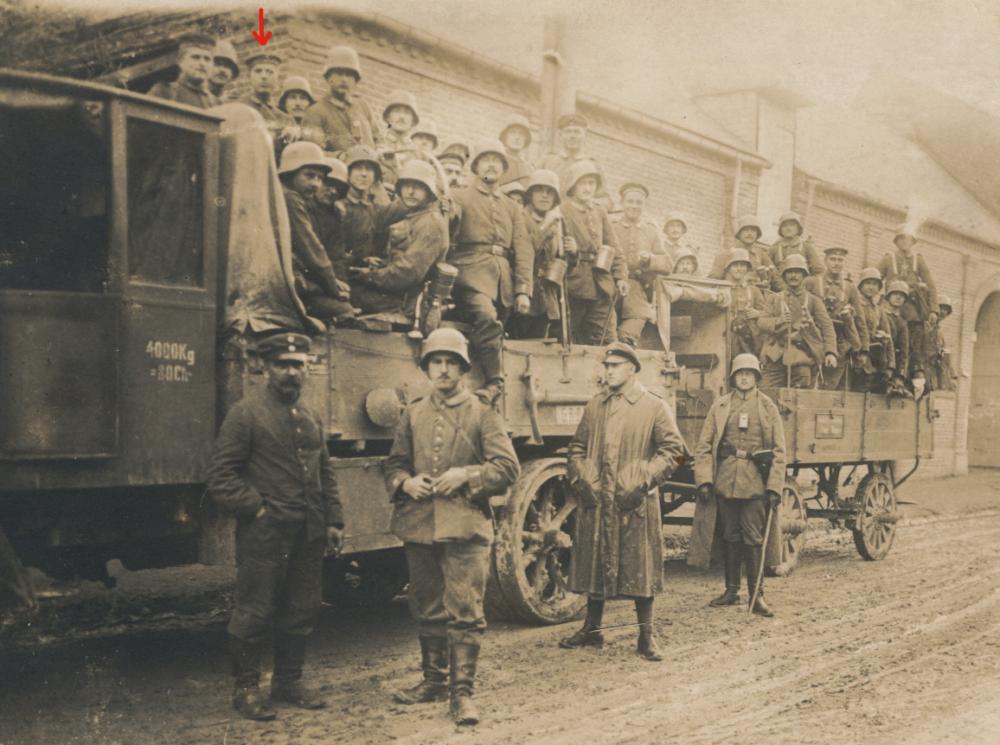
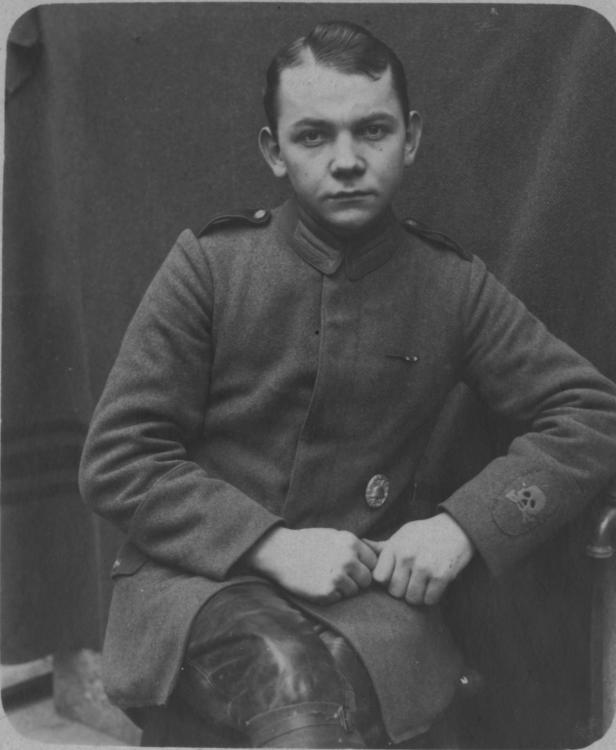
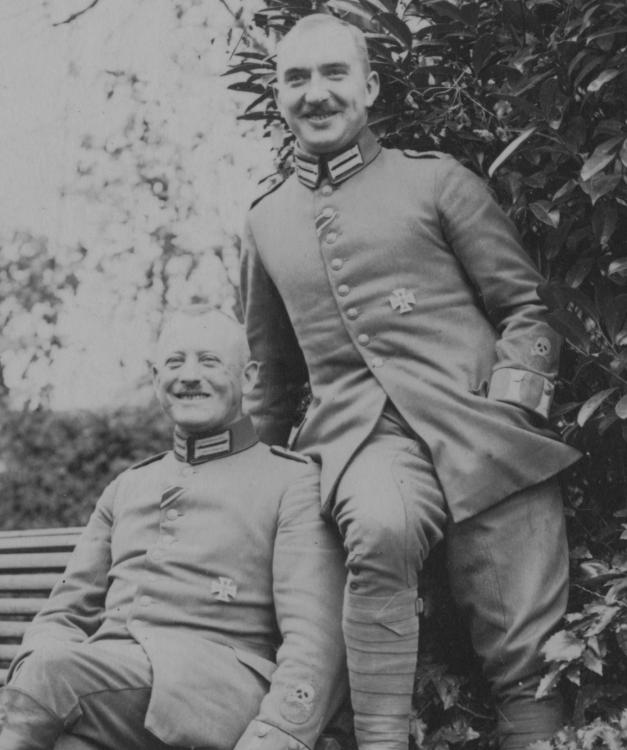

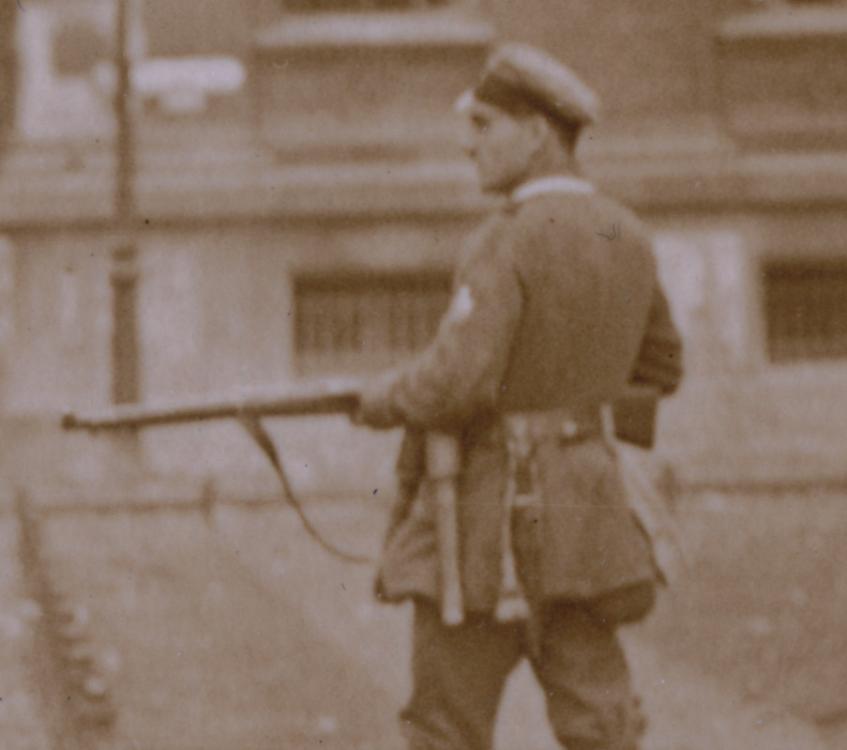
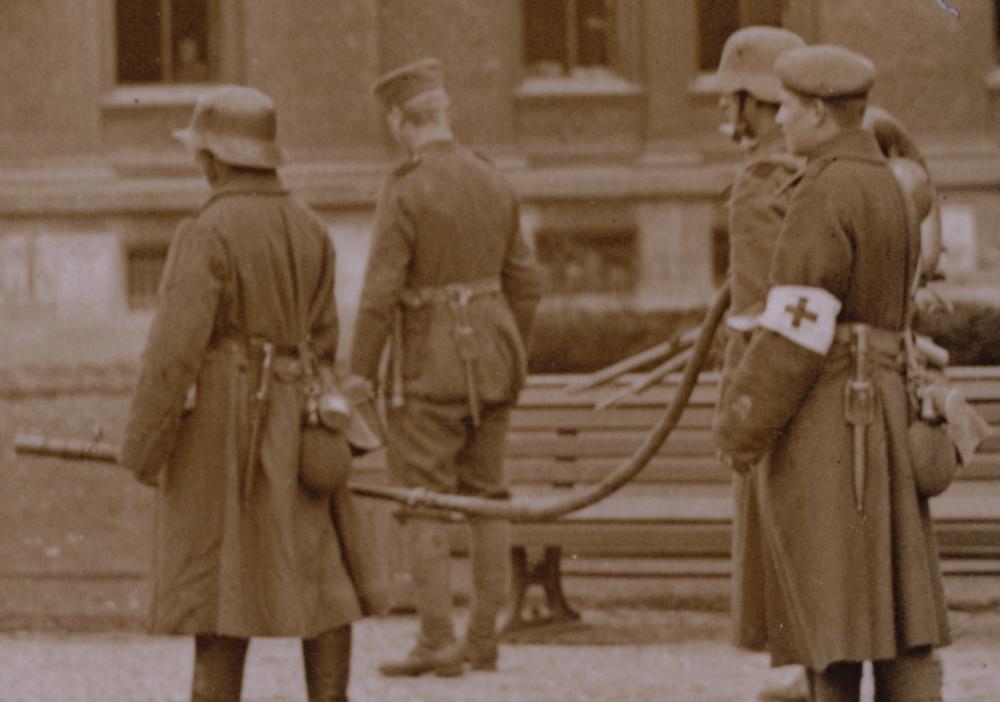
Flammenwerfer! Flames, skulls and stuff
in Germany: Imperial Uniforms, Headwear, Insignia & Personal Equipment
Posted
The son of a German flamethrower pioneer said that his father told him he was issued only one badge, I have postcards that say, "Got my new badge. I need to take care of it because they gave me only one." And the book Sturmtruppen und Flammenwerfer by Ludwig Charles Theune says that each pioneer had one uniform with Garde Litzen and badge and one "plain" uniform with neither.
The badges were moved around a lot on the sleeve, depending on the unit. Each position signified a different unit. Photos show that the badges were often pinned in place rather than sewn, which indicates that they were taken off. If multiple badges WERE issued to the thousands of men who passed through the regiment, there would be a lot more in existence today.
In every group photo of flamethrower pioneers wearing the badge, there are men without it. It's clear to me that the badge was something they took care of.
Of the thousands of photos I own and have seen, so far I've come across only one on the greatcoat sleeve. In my desire to share this unique image, I forgot the ritual, that posting here requires that I run a gauntlet.
It's not worth the price of admission. I'll keep my images to myself.